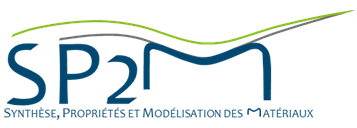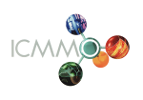
Advanced Materials for Photonics
Animation : Matthieu Lancry, Professor
Our main objective is the understanding of the mechanisms of silica-based glasses interaction with photons, leading to permanent changes in the physical properties, which can be then used to develop applications in photonics. We have strong track record in fundamental studies regarding materials chemistry synthesis and characterization, silica-based glasses laser processing and more generally on laser-matter interaction in glasses. For example, our group is well known expert in UV laser glass processing and defect spectroscopy in a wide variety of silica-based glasses. We have published several papers on glass transformation kinetics, which leads to lifetime prediction for telecommunication companies. This led to international recognition with invited talks, consulting contracts for these companies and invited papers and book chapters in the UV photosensitivity field.
Our research activities over the last 10 years have thus unfolded in four main directions:
- Photosensitivity to IR femtosecond lasers silica-based glasses
- Photo-precipitation of micro / nanocrystals oriented by femtosecond laser in silicates
- Photosensitivity to UV radiation of silica-based optical fibers
- Dynamic evolution of physical quantities in disordered Media
Line-up: The composition of the MAP group evolves from year to year depending on the supports to finance students, post-docs, study engineers and foreign guests. For example, in 2021, the team consisted of a Professor (Matthieu LANCRY), CNRS reseach director (Bertrand POUMELLEC), an A/Prof (), 6 doctoral students and a postdoctoral fellow. We also welcome various visitors in connection with our various collaborations.
Highlights:
Fictive temperature reduction in optical fibers: I would also point out our studies on the reduction of losses in optical fibers via fictive temperature reduction, which leads to a review paper in Progress in Material Science (5-Year Impact Factor: 33.5).
Chirality, non-reciprocal writing, and circular optical properties: We discover chiral mechanical structures photo-induced in silica glass by a femtosecond laser linearly polarized. Recently circular optical properties and especially circular dichroism were reported in an invited paper to (Light: Science & Applications (13,6 impact factor). The cornerstone would be the coexistence of two linear birefringent contributions with non-parallel non-orthogonal neutral axes (Light: Science & Applications 12, 46 (2023), https://doi.org/10.1038/s41377-023-01080-y)
Ultrafast silica oxide destabilization and nanogratings formation in various glasses: The dissociation of oxides under heating can vary from a few minutes to hours depending on the temperature. In 2010, we demonstrated that femtosecond laser could dissociate an oxide on a temporal scale of a fraction of picosecond over a spatial scale of a few 10's of nm (Laser Photonics Rev. 7, No. 6, 953–962 (2013), Impact factor 9.3). These scales are now on dimensions shorter than conventional relaxation scales and therefore we present evidence that light not only weakens the bond strength of the oxide but also displaces atoms leading to an out of equilibrium phase separation on a scale that is too short for normal thermo-mechanical relaxations. Applications can be numerous in fast material processing by producing nanoporous material, photonics by changing optical properties. For we exploit these properties to create a wide range of waveplates and recently we reported achromatic polarization rotator (Applied Physics Letters 107, 181111 (2015). This work recently led to the writing of an invited journal article in Progress in Materials Science (IF-37,4): https://doi.org/10.1016/j.pmatsci.2023.101226
Oriented nano-crystallization in silica based glasses: In 2012 (Opt Lett. 37 (14), 2955-2957 (2012)), we demonstrate that LiNbO3 crystals were space-selectively nucleated and grown in the bulk of silica-based glass by femtosecond laser irradiation at high repetition rate (typ. 300 kHz). Well-oriented crystals with their polar axis aligned with the laser scanning direction have been fabricated by manipulation of the temperature gradient in adjusting the laser parameters. This leads to tunable angular-dependent second-harmonic generation in glass by controlling femtosecond laser polarization as reported in J. Opt. Soc. Am. B 33, 741-747 (2016)

